Turn To A New Hobby With These Expert-Recommended Wood Lathes
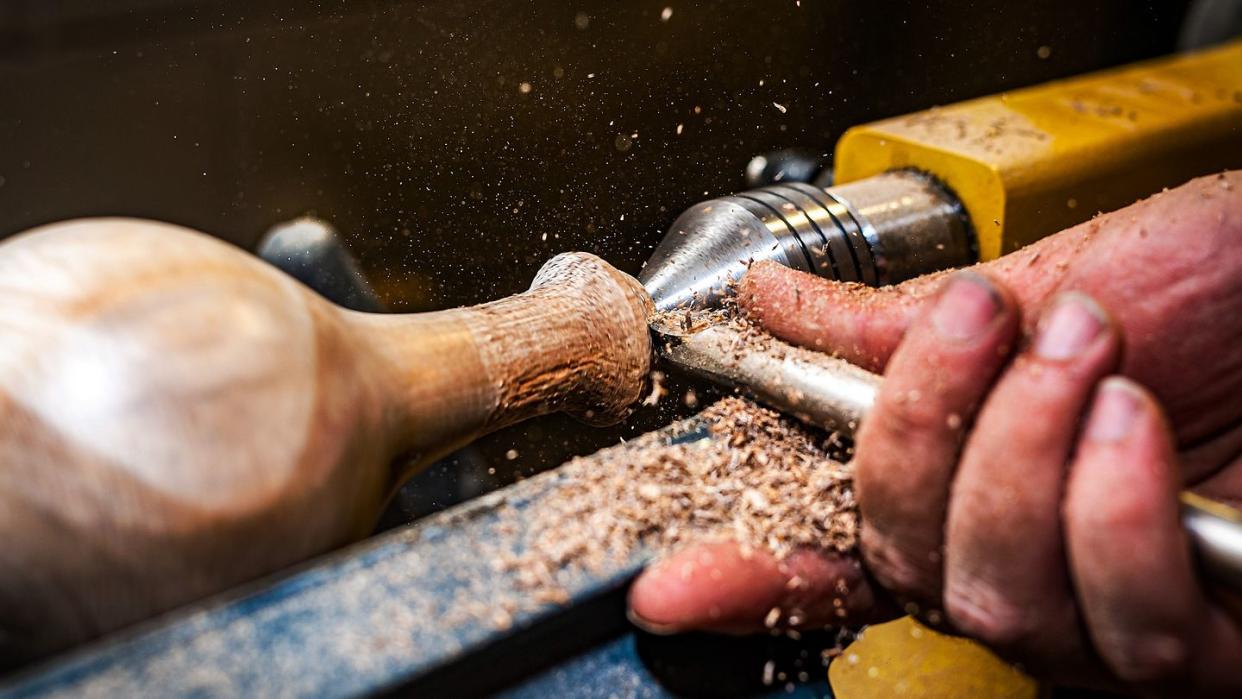
"Hearst Magazines and Yahoo may earn commission or revenue on some items through these links."
Starting a woodworking hobby is a great way to learn a creative and functional skill, but let’s be honest, most beginner projects can be a little underwhelming. Don’t get me wrong, I’m all for learning the basics, but if you’re ready to graduate from bird houses and step stools to something a bit more exciting, a wood lathe could scratch that itch.
These high-powered machines hold and spin wooden workpieces at high speeds, allowing you to use chisels and gouges to sculpt and carve a range of useful and functional items like bowls, cups, furniture legs, baseball bats, and even smaller projects like pens, chopsticks, and chess pieces.
There is a decent learning curve involved with operating a wood lathe, and they’re not exactly cheap, but if your idea of woodworking involves raw power and flying wood shavings, it could be worth the investment. Purchasing the best wood lathe for you can be intimidating, especially if you’re not familiar with them.
To help narrow your search, I’ve utilized the expertise of Shay LaRue, a general contractor with 20 years of carpentry experience, currently a Frontdoor Virtual Handyperson Expert, reviewing home care and maintenance issues with homeowners via video chat. With Shay’s help, and my own experience around lathes as a custom furniture carpenter, we’ve rounded up the five best wood lathes for beginners, making sure to include a useful variety of types, sizes, and capabilities.
The Expert (Alex Rennie): As a former residential and commercial carpenter, I’ve used my expertise and knowledge to write about DIY, tool, and home products for Business Insider, Family Handyman, and CNN Underscored. During my time as part of a custom furniture team, I worked out of a large woodshop filled with woodworking tools and machinery, including a variety of wood lathes. I’ve been fascinated by these machines ever since, and have a ton of respect for both their sculpting capabilities as well as the precautions needed to use them safely.
The Expert (Shay LaRue): Shay LaRue is based out of Wichita, Kansas and has over 20 years of experience in carpentry, building homes and concrete construction for residential and municipal roadways. Currently a Frontdoor Virtual Handyperson Expert, reviewing via video chat home care and maintenance issues with homeowners, Shay has also been a General Contractor with his own business for over 12 years, specializing in home renovations and inspections. With his own wood lathe at home, Shay is very familiar with how they work and what to look for when purchasing one.
What To Consider
Wood lathes can be intimidating to purchase, especially if you’re new to wood turning. To ensure you purchase the best option for you, it’s important to familiarize yourself with the different types, sizes, and capacities available.
Types
According to LaRue, “First you need to consider what types of projects you are going to tackle with your lathe. Are you creating larger projects like bats or table legs, or smaller projects like bowls or chopsticks? Knowing what you will be making will help you decide what style and size of lathe to purchase.”
Mini: These bench top lathes are the smallest options, and their 8- to 10-inch swings (Swing and other terms are detailed more below) are convenient for working with smaller projects like pens, ornaments, and drawer pulls. Due to their compact size, mini lathes are ideal for those short on space. Although they’re also the most budget-friendly of the lathe types, mini lathes are also the least powerful, generally providing ½ horsepower.
Midi: Larger and more powerful than a mini lathe, but still compact enough to use on a bench top, midi lathes strike a good balance of convenience and functionality. These are the most common lathes for beginners, and our expert, Shay LaRue, recommends them for those new to woodworking, explaining, “there are multiple applications and projects you can accomplish with this style.”
With swings starting at 12 inches and bed extensions that can be purchased separately, midi lathes are just as practical for small, intricate projects like pens and ornaments, as they are for larger pieces like bowls and baseball bats.
Full-Size: Unlike the benchtop mini and midi options, full-size lathes (also called floor lathes) are freestanding, with sturdy bases or legs that position your workpiece at waist height. Their powerful motors and large capacity are essential for bigger turning projects like bowls, platters, and even porch posts.
These machines take up a lot of space, so make sure your workshop can accommodate one safely. Their footprint can be significantly larger than their project capacity. For example, an 18- by 36-inch capacity full-size lathe will actually require 26- by 60-inches of floorspace.
Speed
The speed a lathe spins determines what projects it can handle effectively and safely. Lower speeds are needed to maintain control and minimize vibrations when working with larger, heavier workpieces like bowls and platters, while high speeds allow you to perform clean, precise cuts on pens and other small diameter items.
A good rule of thumb to determine the best speed range for your project, is to divide 6000 and 9000 by the diameter of the workpiece. For example, a 6-inch piece would require speeds of 1000 to 1500 RPM. The speed ranges of wood lathes can vary significantly, so it’s important to make sure your required speed is available.
Power
Generally speaking, larger lathes will have more powerful motors. This power translates to higher torque, which allows the lathe to maintain its speed during operation, especially when performing deep, aggressive cuts at lower RPM. Mini lathes typically have 1⁄2 HP motors, Midi types have 3⁄4 or 1 HP, and full-size lathes have 1.5 HP and higher.
Capacity: Swing & DBC
It’s important that your lathe is large enough to properly fit your workpiece. This capacity is measured in two dimensions: “swing” and “DBC”.
Swing: A wood lathe’s swing measurement indicates the maximum diameter workpiece that can fit inside. That being said, this swing measurement doesn’t translate directly, and a 10-inch diameter workpiece isn’t compatible with a lathe that has a 10-inch swing. In order to provide the space needed to work safely and effectively, the diameter of your workpiece should be at least 2 inches less than the swing.
DBC: The distance between centers, or DBC, indicates the maximum length of the workpiece a lathe can fit. Generally speaking, the larger the lathe, the higher the DBC. It’s worth noting that some Midi lathes are available with bed extensions that can be purchased separately, which could come in handy for longer projects that don’t necessarily require the high cost and power of a full-size model.
Stability
With wood lathes, heavier is better. Weighty, cast iron bases dampen vibrations and reduce the chances of minute shakes or wobbles that can ruin a workpiece. The heft of cast iron also allows you to apply the force necessary to perform deep cuts without worrying about the unit's stability. All of the options on our list are engineered with cast iron bases.
How We Selected
As part of a custom furniture company in NYC, I’ve been around a variety of wood lathes, from smaller bench top models, to huge machines in a warehouse woodshop. I kept this experience in mind when I began researching options for this list, and my familiarity with their operation, capabilities, and productivity allowed me to better understand product specs, manuals, and reviews.
I then interviewed a professional with a lathe of his own, Shay LaRue, to add expertise from someone with even more hands-on experience and insight. I then gathered a pool of options, using both Shay’s recommendations, as well as popular options recommended by other review sites, and user message boards like Reddit’s r/turning community.
Then, using several factors to eliminate redundant options, and ensure I included a useful range of sizes and types, I landed on the five options shown here.
340356 Amp Variable Speed Benchtop Wood Lathe
Not too big, not too small, this midi Wen lathe is just right. With a wide RPM range and 14-inch swing, it’s versatile enough to handle a ton of turning projects, from pens and chess pieces, to bowls and cups. This versatility is specifically why our expert Shay recommends midi WEN lathes for newcomers.
Thanks to a variable speed control dial with digital readout, setting precise RPM is about as easy as it gets. Additionally, a directional switch allows you to easily reverse direction for fine sanding. A 4-inch face plate provides additional support for larger bowls and plates, and the on-board accessory caddy provides all the wrenches needed to attach it.
I was especially impressed with WEN’s instruction manual, which features clear and concise directions on lathe assembly and operation, with tons of helpful diagrams. Considering the range of projects this lathe can handle, its user-friendly design, and reasonable price tag, this WEN machine is a no-brainer for amateur turners.
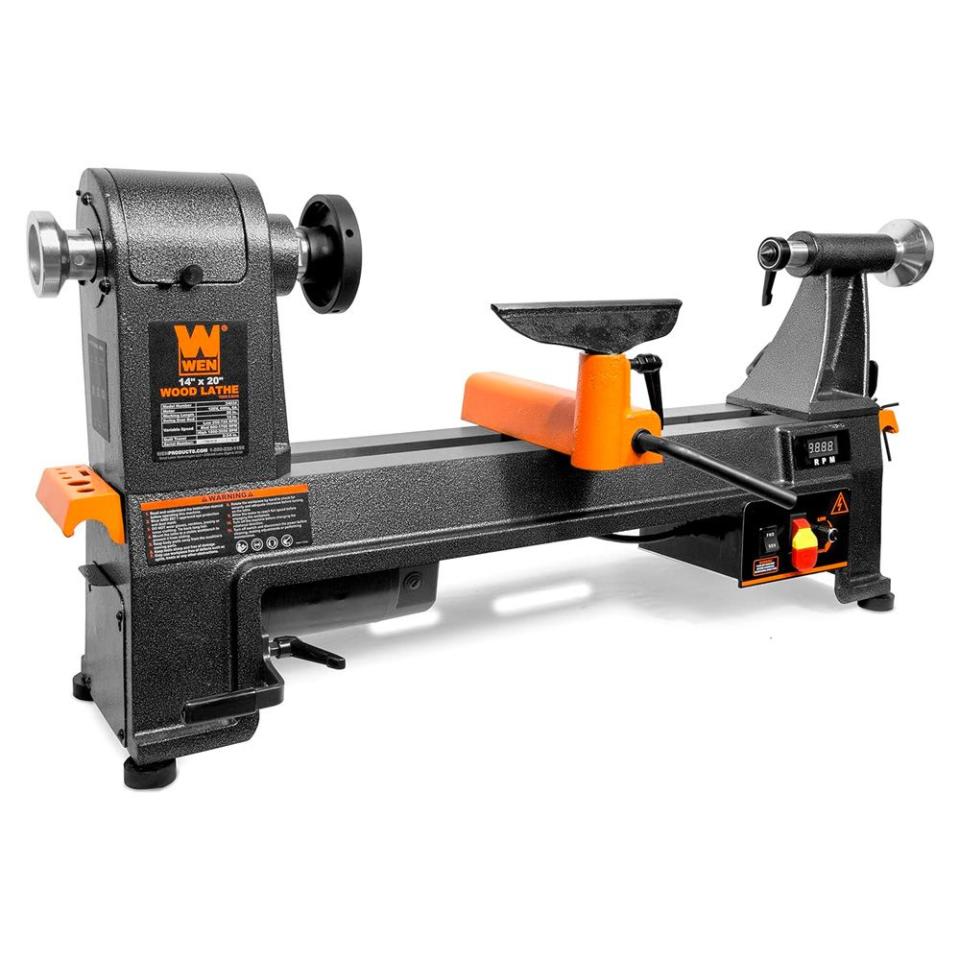
340356 Amp Variable Speed Benchtop Wood Lathe
amazon.com
$605.45
JET JWL-1015VS Variable-Speed Woodworking Lathe (719100) JWL-1015VS, 10" x 15" Variable-Speed Woodworking Lathe, 1Ph 115V (719110)
Don’t let its size fool you, this sturdy little machine is just as tough and capable as its larger siblings. Durable, precise, and versatile enough for first-timers and pros alike, the JET JWL-1015VS is a great choice for those interested in smaller turning projects. The 5-inch wide bed bay (the base that connects the two sides of the lathe) and hefty cast iron construction provide the stability you need to ensure smooth, reliable operation.
This model also features a variable speed knob, although you will need to adjust the belt position in order to switch between the three speed ranges. Unlike many undersized “beginner” tools that you grow out of as you gain skills, the durability and sturdy construction of this lathe–along with the optional bed extension–make it a fine option as a permanent fixture throughout your turning career.
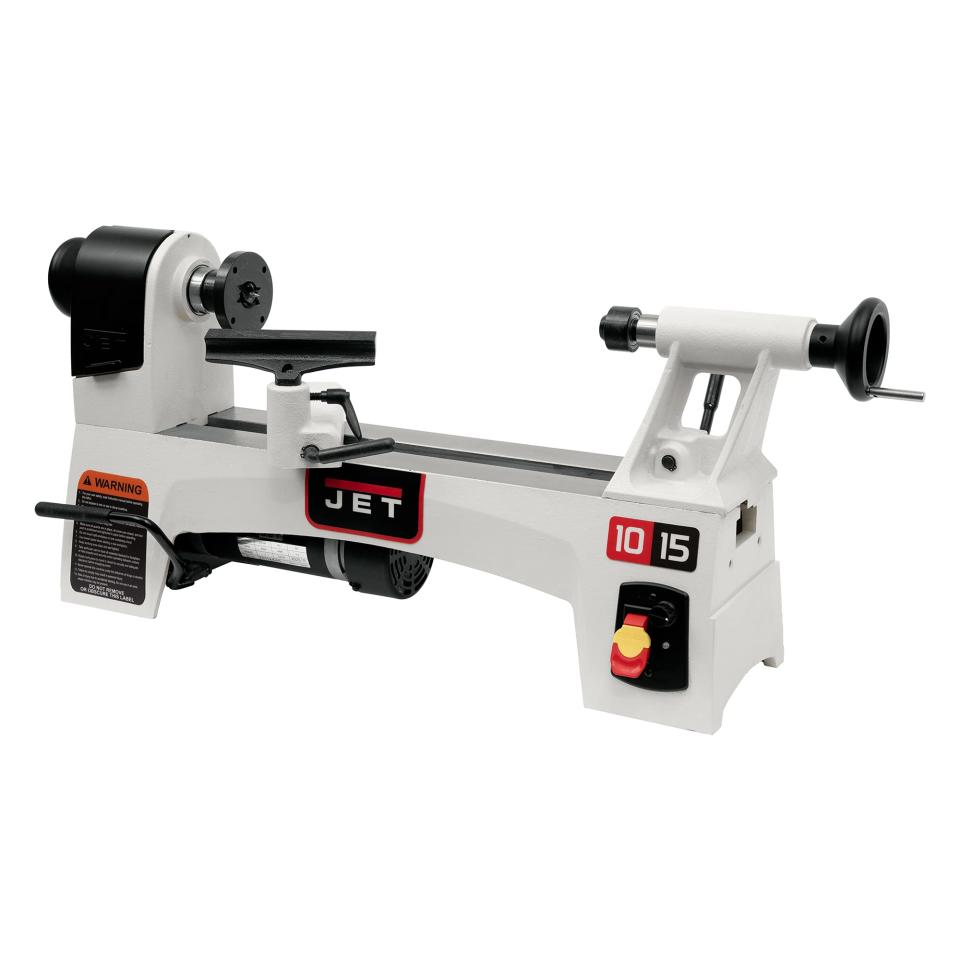
JET JWL-1015VS Variable-Speed Woodworking Lathe (719100) JWL-1015VS, 10" x 15" Variable-Speed Woodworking Lathe, 1Ph 115V (719110)
amazon.com
Revo 18/36 Lathe
If benchtop versions just aren’t cutting it in the power and capacity department, this full-size model from Laguna could be just what you’re looking for. Positioned on top of a beefy cast-iron base–which provides 427 pounds of stability–this lathe has 18 inches of swing and 36 inches between centers. That's plenty of room for large diameter bowls as well as spindles and table legs. Its 1.5 HP motor maintains constant torque, even when turning heavy or challenging loads.
What really stuck out to me when comparing the Laguna to other lathes, and what makes it so well-suited to larger projects, is its low speed range. Capable of creeping down to just 50 RPM, this lathe ensures that you’ll always be able to start your project as slow and safe as you like, which is essential for those large, heavy bowls.
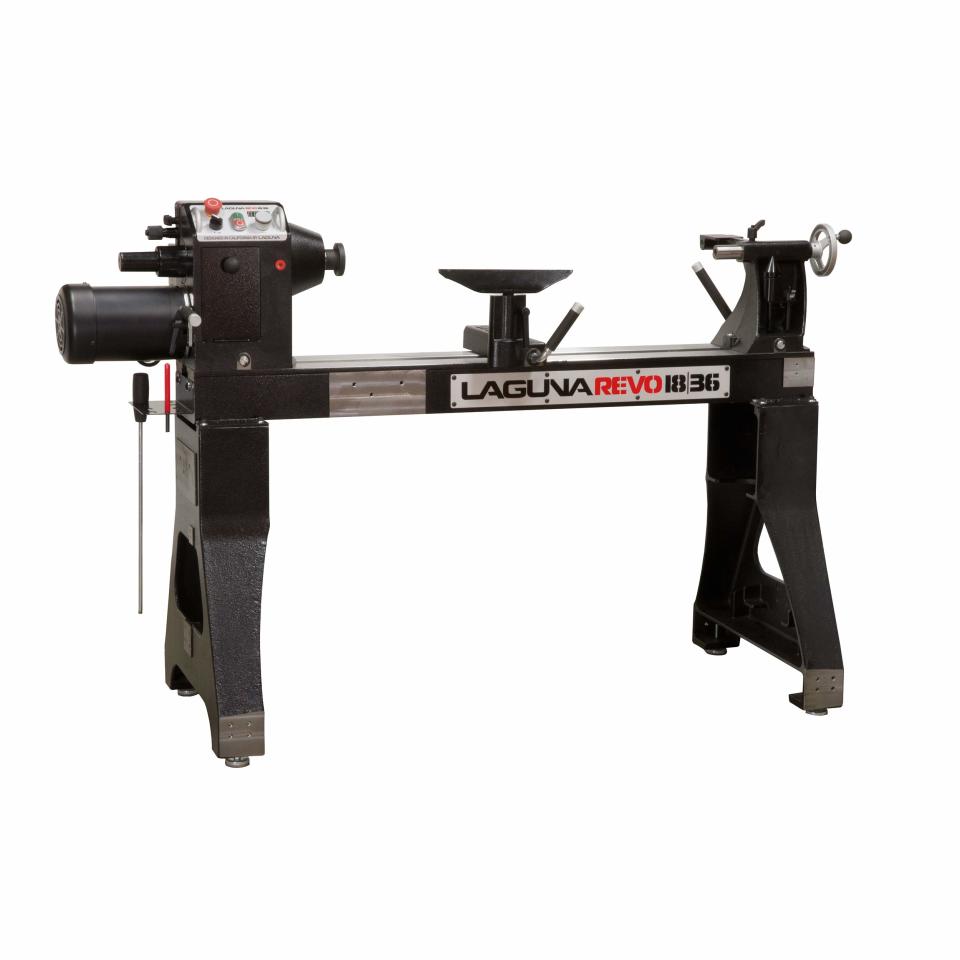
Revo 18/36 Lathe
amazon.com
$3025.90
Excelsior 5-Speed Mini Lathe
Shopping for a wood lathe on a budget can be tricky, and any money saved can quickly become irrelevant if precision and performance are compromised. Despite its low price, this mini lathe is definitely not “cheap”, featuring the overall build quality of the trusted Rockler brand, and a heavy-duty cast iron base for stability and durability.
It doesn’t have all the bells and whistles of a higher-cost option, but this machine's durability, combined with a ½ HP motor, 10-inch swing, and 18-inch DBC, is a great foundation for an entry-level option.
The main drawback of this machine is its relatively fast low-speed setting of 760 RPM. If you’re more interested in higher-speed projects, though, this could be less of an issue.
If you don’t have the budget for a more advanced option, or just want to limit your investment in case you lose interest, this is a solid, reliable option.
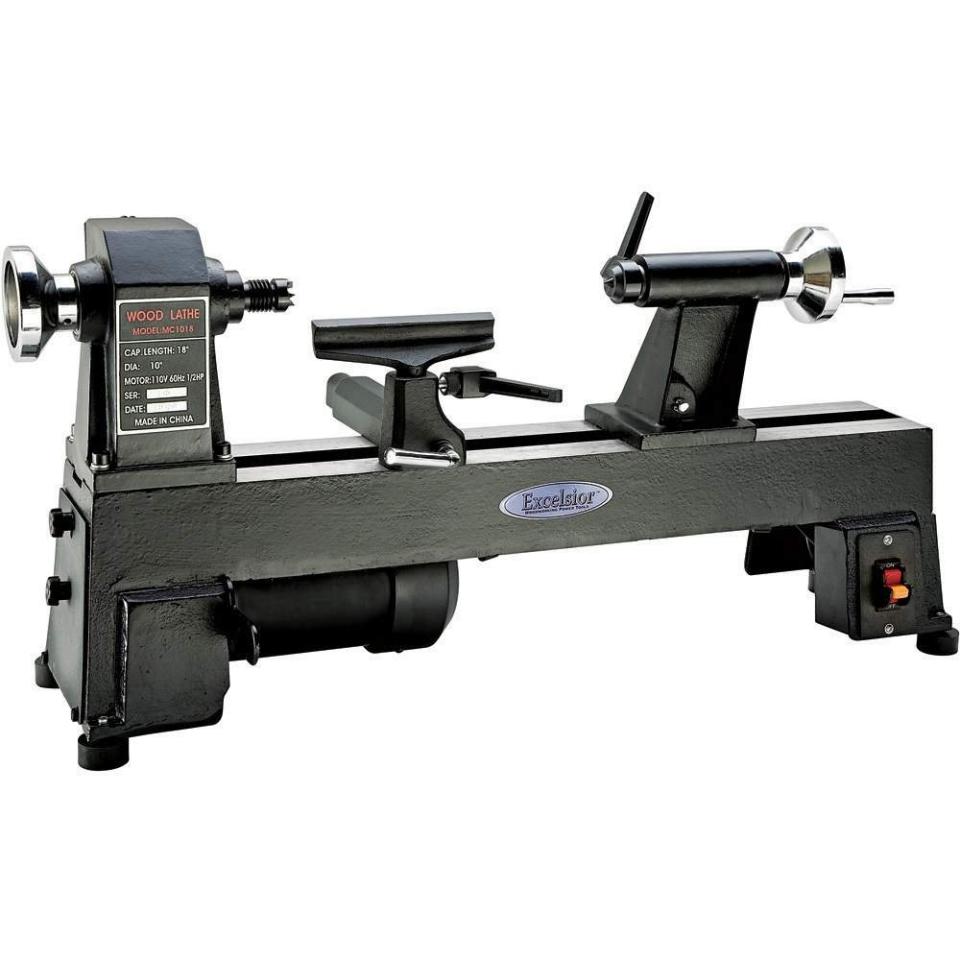
Excelsior 5-Speed Mini Lathe
amazon.com
$399.99
T25920 Benchtop Wood Lathe
Our expert Shay recommends Grizzly benchtop lathes like this one (along with WEN) for users looking for an entry-level option, citing their reliability, minimal maintenance requirements, and convenient availability. This model in particular is capable of reaching a speed of 3700 RPM, and with an optional 22-inch bed extender for about $100, it's well-suited for smaller diameter workpieces like chair and table legs.
The quick-release tailstock allows you to quickly and easily secure or remove your workpiece, and a handy LED readout displays its current RPM. This lathe’s 12-inch swing and 300 RPM low setting also make it perfectly suitable for larger diameter items–although its ¾ HP motor might not be powerful enough to handle heavy bowls.
So if you’re jazzing up your custom furniture projects with handcrafted legs, but still want the versatility to handle bowls, cups, and pens, this could be a perfect option.
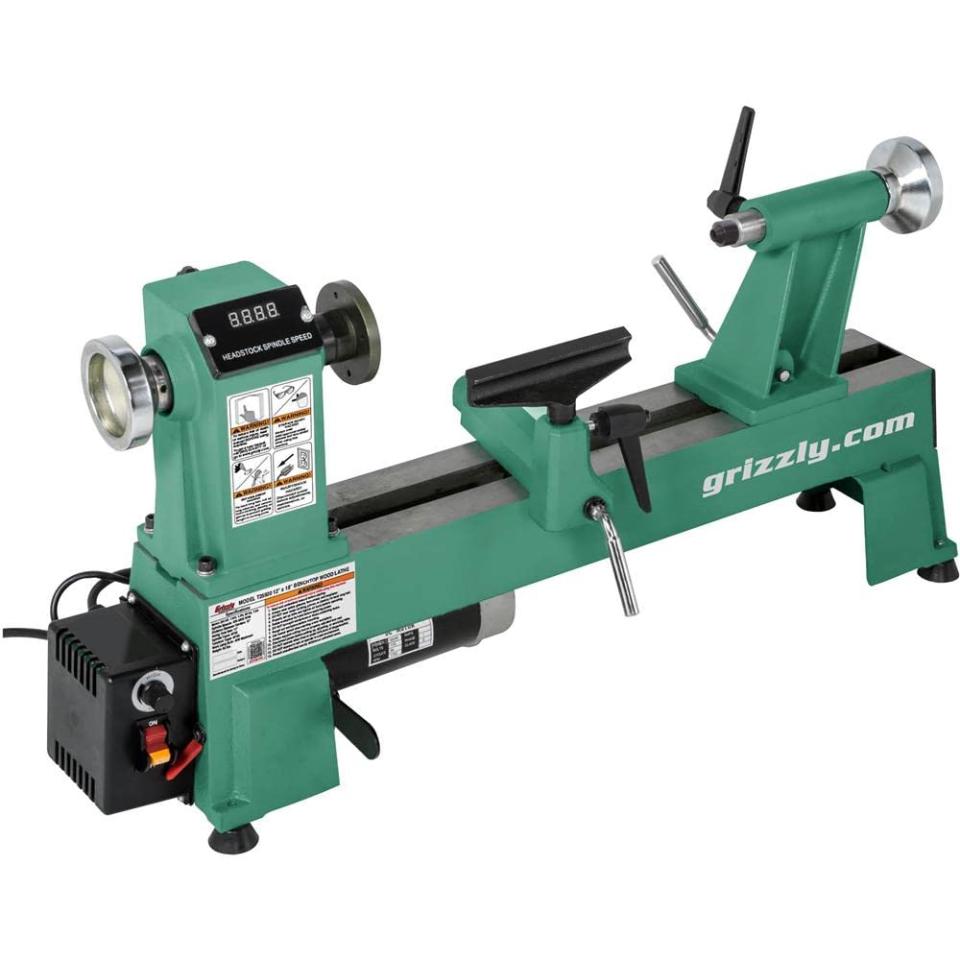
T25920 Benchtop Wood Lathe
amazon.com
$501.95
6pc HSS Chisel Set
A wood lathe isn’t much use without a set of tools to work with, and this six-piece set from PSI provides a beginner-friendly combination of value and versatility. It includes everything you need to get started on a range of turning projects, with chisels and gouges for spindle work and a ⅜ inch gouge and scraper tool for bowls. The wooden storage case ensures nothing will be damaged or misplaced when not in use, and also makes for an attractive gift box.
If you’re not sure what you’ll be turning, and don’t want to invest in a niche tool set you might not use a lot, this set is a good place to start.
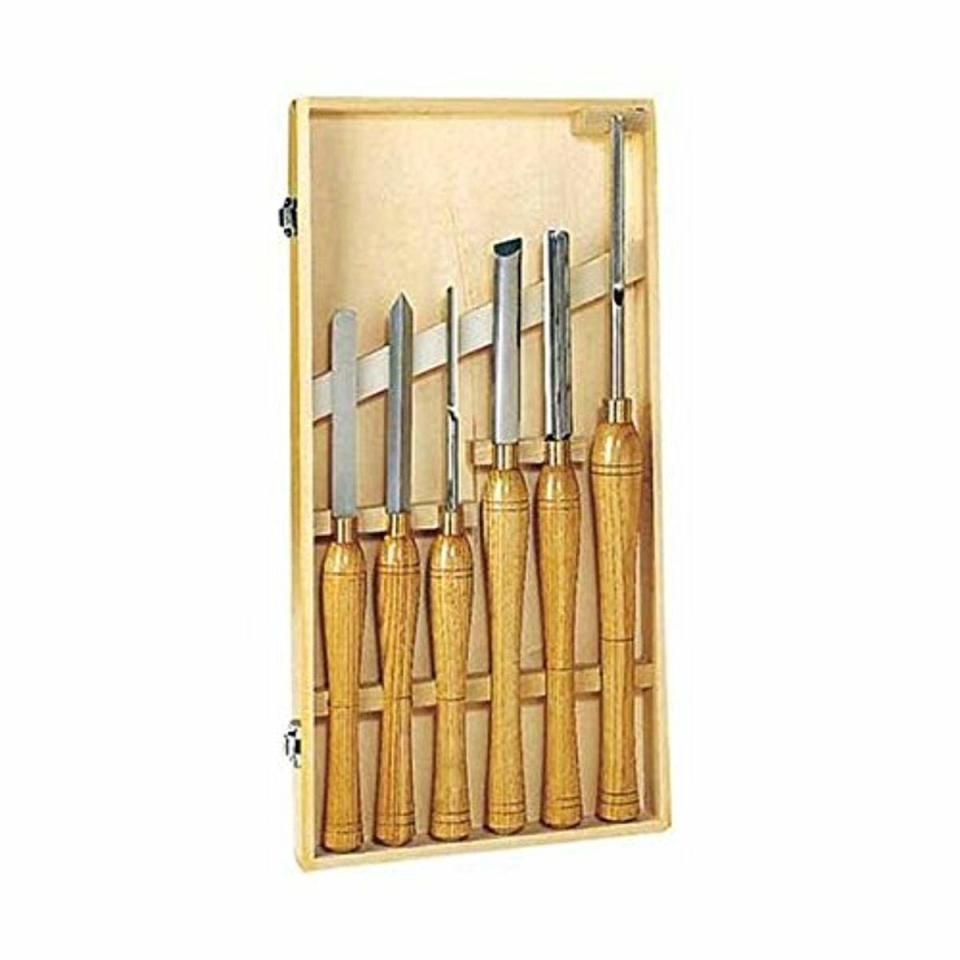
6pc HSS Chisel Set
amazon.com
$89.95
LX220 1/2" Bowl Gouge
There’s no need to spend hundreds of dollars on a premium bowl gouge if you’re just starting out. This ½-inch PSI gouge is a nice, all-purpose size for general bowl turning, and unlike ultra-cheap options, it’s made from strong and durable M2 high speed steel.
It’s also affordable enough that practicing sharpening and shaping its angle and shape won’t be too nerve wracking, as it would be with a higher-end option. This gouge is also available in ⅜- and ⅝-inch sizes, if you have a better idea of the bowl diameter you want to work with.
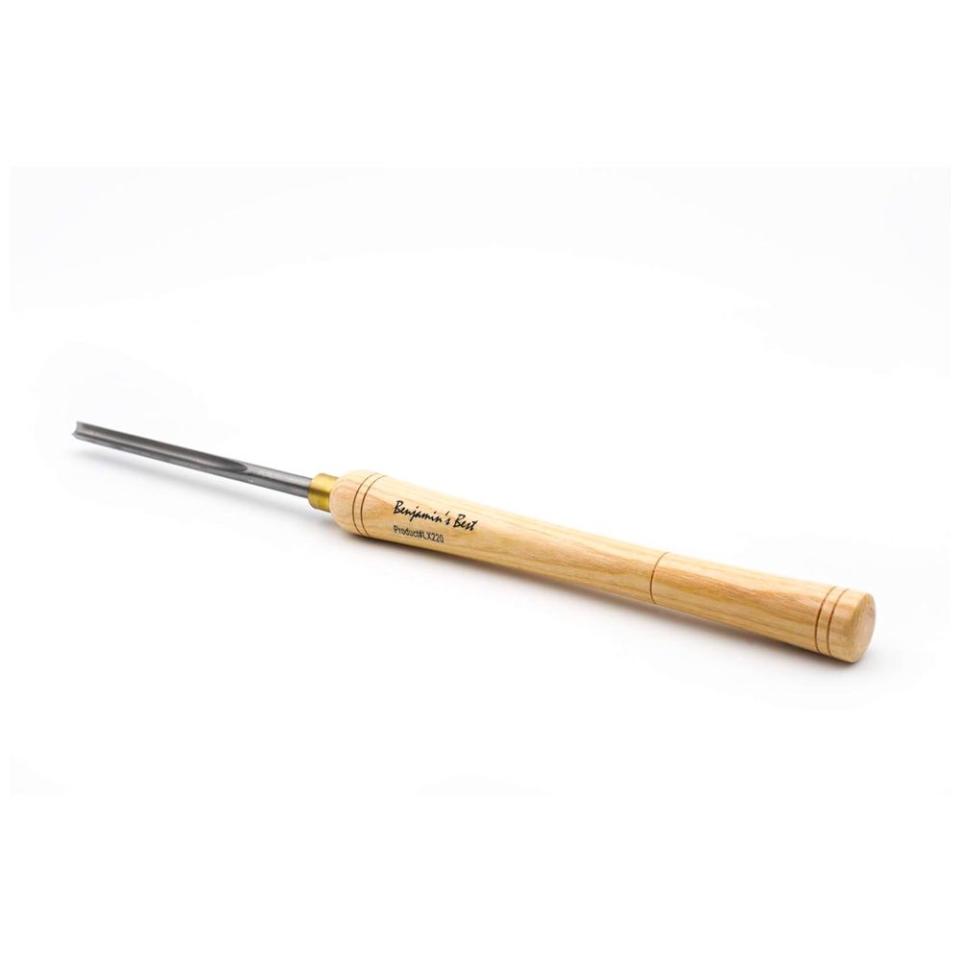
LX220 1/2" Bowl Gouge
amazon.com
$30.95
Woodturning Q&A With Expert Alex Rennie
What is the best type of wood to use with a wood lathe?
Different types of wood have their own strengths and challenges, so the best for you depends on your skill level and personal preference. According to Shay, “Hardwoods and softwoods, such as walnut, fruit tree wood, and ash, are fantastic for turning.”
He adds that soft woods require more finesse and can be easily torn if speed isn’t adjusted properly. Walnut in particular is a popular option for bowl turning, due to its attractive grain pattern, rich colors, and overall durability.
What kind of safety considerations should wood lathe users keep in mind?
“Safety is critical when operating a lathe” Shay states, and I wholeheartedly agree. These powerful machines spin extremely fast, and their open design leaves users vulnerable to injury and even death. To prevent accidental entanglement in the rotating spindle or motor, Shay advises, “Make sure you are not wearing loose clothing or jewelry, and pull hair back while operating the machine.”
To minimize injury from flying debris or dislodged workpieces, you should always wear safety glasses or face shield from the moment the lathe is turned on. Before you even try to use your lathe, you should thoroughly review the instruction manual, and pay close attention to proper workpiece mounting procedures. If you can find one in your area, I highly recommend taking an introductory woodturning class.
To reduce the overall chances of injury, Shay also stressed the importance of never rushing a project, and taking your time as you work.
How do you finish your turned workpiece?
Once your piece is carved and sized properly, it’s time to finish it with sandpaper. First, shut off the lathe and remove the tool rest to give yourself plenty of room. Then, bring the lathe back up to a low speed, and move the sandpaper back and forth across the surface. Transition from lower grits (80 is a good starter grit) to higher until you reach your desired smoothness.
It’s important to not switch grits until all sanding marks are smoothed out, as they can practically disappear as you continue to sand with higher grits, and suddenly reappear when you apply your finish.
To sand the inside of bowls, many turners opt to power sand, using a drill-mounted sanding disc attached to a foam base. For narrow, hollow items, like cups or vases, wrap a piece of sandpaper around a dowel or tool handle to maneuver it inside.
Once sanded, you can finish the piece with a coat of lacquer, oil, or wax, depending on its intended use and your personal preference. Walnut oil is a popular option because of its food-safe qualities and deep penetration, and is applied by simply rubbing it into the wood. If you prefer a more natural look, don’t apply anything at all, and the raw wood will darken and patina over time.

You Might Also Like

